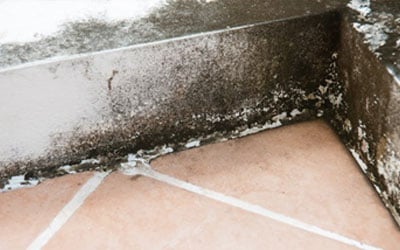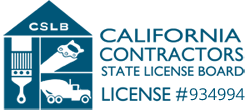
Mold can become a big nuisance in commercial spaces, sneaking into corners, basements, and any damp area it can find. For businesses, ignoring mold can lead to more than just an unpleasant sight. Mold poses significant risks to both the health of employees and the integrity of the building. It releases spores into the air, which can cause allergy-like symptoms or respiratory issues for some individuals. Over time, unchecked mold growth can eat away at materials, weakening floors, walls, and which ultimately could result in costly repairs.
While mold itself might seem unimpressive, its effects are anything but. In a business setting, mold can lead to downtime if parts of the building need to be closed for cleaning, which affects productivity and revenue. That’s why understanding the need for proper commercial mold inspections is not something to put off. Late summer in Orange County, when temperatures can drive moisture into unexpected places, reminds us that having regular checks is a proactive way to maintain a healthy and safe environment for everyone who walks through your doors.
Understanding the Need for Mold Inspections
Regular mold inspections are crucial for maintaining a safe workplace, especially in commercial properties. Let’s break down why they’re so important:
- Health Risks: Mold produces allergens and irritants that can cause reactions in sensitive individuals. Symptoms like sneezing, skin rash, or severe lung issues can arise, disrupting health and well-being.
- Property Damage: Mold tends to feed on whatever surface it grows on. Over time, it can degrade paint, wood, and even drywall, compromising the structural integrity of the building.
- Legal and Financial Impacts: Failing to address mold issues can lead to expensive lawsuits or fines. Regular inspections prevent problems from escalating to this point.
Early detection is the best defense against mold. By catching growth early, you avoid the bigger headaches of extensive cleanups and repairs. In fact, having scheduled mold inspections can be seen as part of routine upkeep, just like regular HVAC maintenance. When you prioritize these inspections, you not only sidestep potential health issues and property damage but also ensure peace of mind knowing that you’re ahead of any issues before they start affecting your business operations.
Steps for Effective Commercial Mold Inspection
A comprehensive mold inspection involves several key steps to ensure any hidden or apparent problems are identified. Here’s what a thorough mold inspection typically includes:
1. Visual Inspection: This is the initial step where experts look for visible signs of mold growth. Inspectors search dark, damp areas where mold thrives, such as under sinks, around leaky windows, or in basements.
2. Air Quality Testing: Mold spores can be invisible to the naked eye but present in the air. Technicians conduct air quality tests to measure spore concentration and identify potential mold presence in occupied areas.
3. Surface Sampling: Sometimes, visual and air tests aren’t enough. Professionals take samples from surfaces to determine the type of mold and its concentration level. This involves taking swabs or lift samples from suspected areas.
Professional expertise in these areas is indispensable as it requires the right tools and knowledge to test accurately. This is where seasoned inspection services are valuable, providing a detailed report with findings and recommendations for next steps. Understanding these methods empowers you to know what goes into a proper inspection, helping you make informed decisions about managing mold in your commercial spaces.
Common Problem Areas in Commercial Properties
Mold isn’t picky about where it decides to settle, but certain spots in commercial buildings are more inviting than others. Identifying and keeping a close watch on these areas is key to preventing a mold outbreak.
One usual suspect is the HVAC system. Air ducts can become a breeding ground for mold if moisture collects inside them. Regular maintenance can help, as well as ensuring there’s no build-up of condensation or leaks. Another hotspot is the basement; its often cooler and damper environment makes it ideal for mold. Regular checks for leaks or damp spots can catch problems early. In kitchen areas, where water and humidity levels rise, mold can hide under sinks or behind appliances. Bathrooms, with their frequent water usage, are another prime real estate for mold, especially around tiles and under fixtures.
Creating a regular monitoring routine for these areas can save both time and trouble. By doing this, you’re not only protecting health but also maintaining property value. A simple checklist can be handy:
- Check HVAC systems regularly for moisture build-up.
- Inspect basement walls and floors for damp areas or leaks.
- Look under kitchen sinks and behind appliances for signs of mold.
- Examine bathroom tiles and around fixtures for mold growth.
Staying proactive with these spaces helps keep mold at bay and ensures your building remains safe and sound.
After the Inspection: What to Do Next
Once an inspection is completed, understanding the findings is crucial in deciding on the next steps for remediation. It’s important to interpret the results carefully to know how extensive the mold issue is. Hiring professionals to explain these findings can give clearer knowledge of what you’re dealing with.
After discovering mold, it’s time to take action. Here’s a practical plan to guide your next steps:
- Review the Inspection Report: Go through the findings to pinpoint affected areas and the severity of the mold problem.
- Decide on Remediation Plan: Work with a restoration team to develop an action plan, addressing problem areas efficiently.
- Implement Preventive Measures: After cleanup, set control measures like improving ventilation or fixing leaks to prevent future mold growth.
Always stress the importance of using professional services for mold removal. While it might be tempting to tackle this problem independently, experts can guarantee a thorough job using specialized tools and expertise, ensuring that the mold doesn’t return.
Maintaining a Mold-Free Environment
Keeping mold at bay in your commercial property is an ongoing process. Regular inspections and a proactive approach can go a long way in preventing significant issues. Investing time in maintaining a mold-free environment translates to a healthy workplace, avoiding unnecessary downtime due to health concerns or renovations. Remember, taking quick actions based on inspection outcomes keeps the space safe and operations smooth. Prioritize these steps as an essential part of your building maintenance.
To ensure your commercial property remains mold-free and safe for everyone, consider the importance of professional help. With expert insights and thorough processes, Restoration Masters is ready to assist you in managing any mold issues effectively. Discover how our services for mold inspections in Orange County can keep your business environment healthy and productive.





